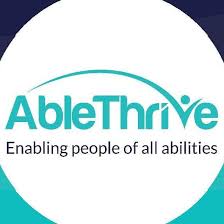|
(This blog tells my family's story. To see more, click "blog" at the top of this webpage.)
The next health emergency gave us no warning. Thankfully, I wasn’t working at the group home on an early March morning when Beth woke up very ill. I drove her directly to the emergency room at St. Vincent in Toledo. I cut time off the hour drive, despite the morning rush hour. A doctor quickly admitted her to intensive care. After numerous tests, Beth acquired the diagnosis of peritonitis, a dangerous infection. The urologist who performed her bladder surgery told us they found extra fluid in the abdomen. The small bladder tear along a surgery seam would heal on its own if they kept the bladder empty. The nurses also monitored her closely for sepsis—an even more frightening and potentially fatal condition. With it, the immune system went awry, spreading inflammation that could lead to organ damage, septic shock, and death. I learned later that sepsis is one of the leading causes of death for quadriplegics. I stayed glued to Beth’s side in intensive care. I shared her alarm with the persistent high fever and strong abdominal pain, especially since she had limited sensation in her trunk. She never asked to look at her homework in the hospital and I never suggested it. I was polite but very involved with the medical staff. And I could be a little demanding at the nurse’s station when Beth needed something. With my sick daughter, I put on a brave face to reassure and comfort. Even though we both were frightened through the first days in intensive care with no improvement. To keep things running at the group home, I made quick phone calls in the hallway where I met a dad soothing a baby with a failing heart, a mom entertaining her toddler with a brain tumor, and a grandma weeping about a terminal diagnosis. I didn’t share the details of those encounters with Beth. She very gradually felt better and her vitals improved. When I drove her home after a scary week in the hospital, she didn’t feel invincible, so John Mayer sang her favorite song by himself from the CD player. We arrived in Tiffin bone-tired with strong antibiotics. And a new perspective. No longer a question, Beth and I wholeheartedly agreed that the seven hundred miles between Tiffin, Ohio and Harvard was definitely much too far for us to be separated in the fall. She made the decision to live in a dorm her freshman year while I stayed off-campus. We’d be in the same city, but I wouldn’t be her personal care assistant. I’d help set up her dorm room and be there for transition support. That was fine with me. There was no way I could drop her off at a dorm in Massachusetts and return to Ohio.
7 Comments
 (This blog tells my family's story. To see more, click "blog" at the top of this webpage.) Beth’s first health crisis arrived suddenly on a brittle January morning, about eight months after her injury. The nurse at our pediatrician’s office took one look at her and led the way to the doctor. After chest x-rays at the hospital, we waited while they called our pediatrician. He told me on the phone that Beth had pneumonia and I interrupted his plan to admit her to the Tiffin hospital. With his consent, I immediately called Dr. Miller, who sent us to Toledo. I focused on the icy roads to keep my breathing steady. Admitted to intensive care at the Toledo Hospital, Beth had never been so sick before. Her childhood asthma returned stronger than it had ever been. Extreme, relentless, uncomfortable symptoms alarmed us. Every labored breath ended in a wheeze. Her weak cough could not clear her partially paralyzed lungs. Her fever spiked too high repeatedly despite strong IV medicine. Her blood pressure, consistently low since the injury, fluctuated. With breathing treatments around the clock, a team of lung doctors for children closely supervised Beth’s care during the days. At night, a nurse checked on her frequently and called a doctor more than once to increase medication or add another. Four bad days and nights melted together with no improvement and little rest. I fixed pillows, offered fluids, and held Beth’s hand, unnerved at how little I could do to help. A nurse carried a few get-well flower bouquets out of the room to remove possible allergens. A doctor talked about surgery to dislodge the mass in a lower lung. He also showed me how to do physiotherapy by pounding her chest and back with a cupped hand. On the fifth day, Beth could breathe a bit easier, and asked to look at her pile of schoolwork for the first time that week. The sixth day, a technician in a gown and mask wheeled in a portable x-ray machine, which showed a smaller pocket of pneumonia. A PICC line for IV antibiotics was scheduled before discharge on the seventh day. An intern started to thread a tiny tube through a vein in my daughter’s right arm to her heart—with no pain medication first. Beth’s left hand suddenly touched mine, her eyes wide. With limited sensation in her arm, the pain had to be significant. When I questioned the intern, she said the procedure was almost over. I hugged half of Beth through TEN more minutes while she wiped away silent tears with her left hand. Our first evening back home, a nurse arrived to connect the IV antibiotics to the PICC line, and left before it finished draining. Beth’s upper right arm swelled, hot and red. I called Dr. Miller in a panic and couldn’t stop myself from crying on the phone. She told me to disconnect the IV. If the swelling went down, we should drive to the hospital in the morning to have the PICC line taken out. If it didn’t, Beth would need an emergency room that night. I turned on the nebulizer for another breathing treatment, and lay down on the hospital bed beside Beth, hugging the arm with the PICC line. I checked her arm through the night. Would she be admitted to the hospital again? Would the leaking vein cause other problems? Would her lungs clear without IV antibiotics? Dr. Miller met us in Toledo on a Saturday morning to take out the line and prescribe strong oral antibiotics. I apologized for my emotional phone call the night before. I asked her how to avoid respiratory problems in the future, a futile attempt to ease my relentless anxiety. I scheduled a follow-up appointment with the lung doctors, the first of many. Beth found an upside to the scary week in intensive care. “I tired easily and fought infections and a bout of pneumonia the first year after my injury, but through it I learned how to take care of myself and reduce health risks.”  (This blog tells my family's story. To see more, click "blog" at the top of this webpage.) Three days after her second neck surgery, Beth left intensive care on a stretcher in an ambulance. The rehab center in Toledo had a pediatric wing with six hospital beds in one room. Next to us, a little girl with a brain injury made unhappy sounds in a bed with high rails. We had moved from a private room in intensive care with constant checks by nurses to...waiting. Waiting for a water pitcher and a cup. Waiting for a box of tissues to wipe away my escaping tears. Waiting for everything, anything. The first day held an eternity of disappointing moments. How was this the magical place where Beth would regain at least a little strength? The second morning in rehab, a nurse and I transferred my daughter from the bed to a wheelchair with difficulty. I pushed her down the hall to the first physical therapy session. During another long wait, I tilted the chair back to alleviate her dizziness. She had major adjustments to make--including the transition to a sitting position. When it was our turn, the therapist said little and moved Beth to a mat table. The therapist solved the immediate, inevitable dizziness by returning her to the wheelchair and tilting the chair back. Done. We considered other rehab choices in northwest Ohio, not realizing that top-ranked centers farther away also were an option. Beth made the decision to transfer to the St. Francis Center to work with a physical therapist who was an expert on spinal cord injuries. When we traveled by ambulance again, our destination was the tiny town of Green Springs, a fifteen-minute drive from home. It was a decision we would not regret.  Our story continues from the moment in my first blog post when Beth tells me that everything will be okay. The Jaws of Life frees her from the car. She is rushed to a helicopter, blades spinning. “I was, strangely, very calm,” Beth wrote in a school essay. “A nurse told me I was in shock. The doctors stuck many needles in me during the helicopter flight that seemed to last only a minute. I found out later that these were high doses of medicine that slows the chain reaction of nerve damage. I landed at St. Vincent hospital in Toledo." "I was taken to an exam room and they cut off my clothes. They jokingly asked me if those were my favorite jeans, and of course, they were. When I was taken to a room in intensive care, my dad asked me if I wanted to know what the doctors had just told him minutes before: I was paralyzed from the chest down. I believed it, but it did not scare me.” I was scared enough for both of us. The single tragedy of not walking spiraled out of control with shattered neck bones, surgeries, a cut spinal cord, paralyzed organs, and serious health risks of quadriplegia. I waited on edge for her optimism to crash. I felt like nothing would ever be okay again. Beth's morphine haze faded as we prepared to leave intensive care for rehab, ten days after the accident. Her experience continued to be different from mine. "Accepting my new disability never was a real issue for me. The issue was what needed to be done next." |
Cindy KolbeSign up for my Just Keep Swimming Newsletter by typing your email address in the box. Thanks!Categories
All
Archives
November 2022
|


 RSS Feed
RSS Feed











